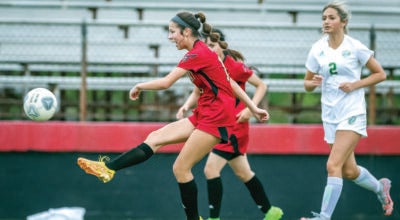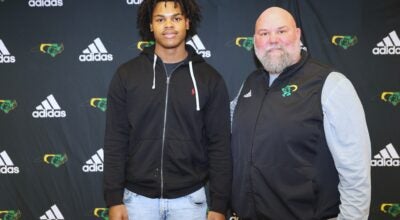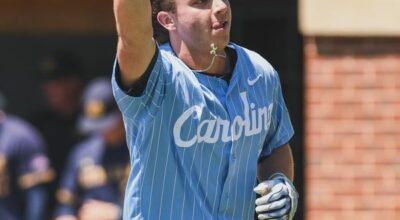NASCAR: Drivers differ on solution
Published 12:00 am Wednesday, April 29, 2009
By Jenna Fryer
Associated Press
CHARLOTTE ó Two of NASCAR’s biggest stars offered differing opinions Tuesday on how the sport can control the racing at Talladega Superspeedway.
Three-time defending NASCAR champion Jimmie Johnson called for a radical transformation of the race track, while Dale Earnhardt Jr. said alterations are not feasible. The two are teammates at Hendrick Motorsports.
The racing at the 2.66-mile Alabama superspeedway is again under scrutiny after Carl Edwards’ airborne crash into the safety fence on the last lap of Sunday’s race. It was the most frightening of three accidents, including a 10-car pileup that knocked Johnson out of the race with nine laps to go.
Because the track is so big and wide that drivers never have to lift off the gas, Johnson said NASCAR cannot remove the horsepower-sapping restrictor plates that are used to combat the high speeds at Daytona and Talladega. That leaves a track alteration as his only suggestion.
“I don’t know how we fix it unless we take a bunch of tractors out there and knock down the walls, knock down the banking, and make the track where you have to let off (the gas),” Johnson said. “Outside of that, I don’t think there is a rule that NASCAR can come up with. As long as we’re running (restrictor) plates, we’re going to have this issue.”
Earnhardt said track alterations aren’t possible.
“There’s no way you can justify it under the current economic state of the sport, of the track itself, of the company that owns the track,” he said. “Nothing from that wreck really stands out to me as, ‘Wow, we got to make a change here or something needs to be done,’ other than the car getting off the ground and people getting hurt. As far as the wreck itself, trying to avoid it from happening, I don’t see how you can.”
NASCAR officials have already dismissed altering the race track.
Many fans consider the four plate races each year to be the most exciting events of the season.
Because the cars all run at about the same speed, drivers are unable to pull away from each other. It creates huge packs of traffic, and one wrong move by one driver can wipe out dozens of cars in spectacular accidents.
Sunday’s race lived up to the hype with 57 lead changes among 25 drivers. Edwards and Brad Keselowski ran down leaders Ryan Newman and Earnhardt on the last lap, and as they neared the finish line, Edwards wrecked while trying to block Keselowski’s winning pass.
Contact between the two cars sent Edwards spinning into Newman’s path, and the second hit from Newman sent Edwards’ car sailing into the frontstretch safety fence. The fence buckled but snapped back, and Edwards’ battered car returned to the track.
Edwards was unhurt, but debris from the accident injured seven fans in the stands. One woman remained hospitalized Tuesday in fair condition with a broken jaw.
NASCAR vowed this week to toughen its policing on aggressive driving and blocking, which often leads to the multi-car accidents. Officials issue consistent pre-race warnings to drivers but have been rare to levy in-race penalties.
Both Earnhardt and Johnson are firmly against NASCAR making “judgment calls” during the race. Johnson said he doubts the drivers can be deterred, anyway.
“All of them can talk until they are blue in their face … but when we get in those cars, we are going to race and try to get the positions,” he said. “That’s what we do.”
Earnhardt argued that the way NASCAR’s new car handles in the draft had as much to do with Edwards’ accident as did any moves made on the race track.
“Part of me gets sort of a little bit angry because it’s like it’s almost as if they’re putting the responsibility, shoving the responsibility for what happened Sunday, totally on the drivers’ shoulders ó as if all our crazy blocking and weaving has just ruined the day,” he said. “As a driver, I share responsibility, but I don’t feel like it’s entirely ours for anything that happens. There’s a lot of different things that put us in those situations.”





